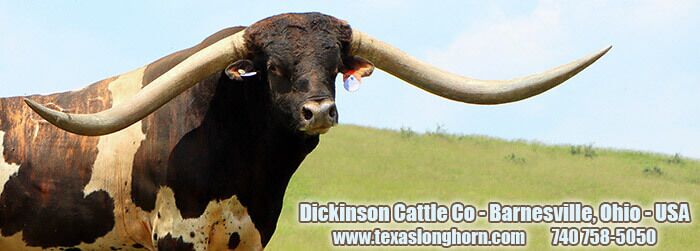TLH - Newsletter (englisch)
Used courtesy of Dickinson Cattle Co. USA

Avoiding Brutal Government Tax?
Erstellt am: von Longhorn
DCC Ranch e-News #428 - 12-13-25
by Darol Dickinson
December 31 is the drop-dead date which ends the tax year. Most folks have a good idea of the year past, if it was profitable and if there will be some very painful tax to pay April 15. It can be corrected. If deductible expenses equals about the same as business profits, taxes may not create a heavy bleeding/crying event. If not, you have a costly problem coming your way--you won't like it.

During the Biden years with multiplying inflation numbers it doesn't take as much income to slip into a higher tax bracket. Looking forward it may trap your business worse than expected. There are only a few days left to adjust expenses to avoid some sad times in April.
Knowing the difference in deductible expenses and non-deductible is the key. I am no CPA, or tax attorney, but I have paid them a lot of fees. Certain business expenses can be 100% deducted in 2025 against income, canceling the heavy tax burden. Here are some sample categories for a ranch operation.
Non deductibles:
- Vacations with no business associated.
- Land purchases
- Home purchases
- Savings in the bank
- Family auto
- Family food, restaurants, groceries, clothing
- Entertainment, movies, phones, ski trips, gambling losses.
- All valid business expenses with no proof of receipts.
Deductibles:
- Equipment purchases, tractors, trailers, trucks for ranch use.
- Tools, fence repairs, labor, advertising, salaries, charity, squeeze chutes.
- Church donations, rental equipment, employee housing.
- Cattle, land leases, educational seminars, office supplies.
- Perishable items, hay, cattle feed, frozen bull semen, embryos.
Now is the time. Only a few days are left to balance the deductibles or non-deductibles. It can mean a simple pittance or megabucks. If you have no moolah left and it was spent on non-deductibles, you have a bad tax plan, and you are going to pay through the nose--the government and Disney Land loves you a lot. You will cry like a diaper-rash baby in the month of April.
We are here to help. Purchase frozen semen (perishable items) or live cattle which are an immediate expense. You can even borrow money for these purchases and it will work. Perhaps 2025 was a good year with a lot of tax and next year may not be so good. Purchase inventory now and sell in 2026 to create a safe transfer of balance. Cattle are easy for this.
At Dickinson Cattle Co over 100 cattle are listed for sale at www.texaslonghorn.com. There are 77 sires available with frozen semen. Design the 2026 breeding season to strengthen the virtues needed in-herd. There are 20 AI sires available that weigh over a ton for those seeking better gaining genetics. There are 12 strong brindles, 13 blacks, futurity champions, and show winners. See the attached sire listing.
Today contact your attorney or CPA about how to minimize taxes and not have a Coronary-Explosion on April 15. You have only a few days left to act. If you aren't serious about this, don't blame me.
Merry Christmas from Dickinson Cattle Co, Barnesville, Ohio
Semen Order Form: https://www.texaslonghorn.com/inventory/semen/semen.pdf
Dickinson Cattle Co., Inc.; 35000 Muskrat Rd.; Barnesville, OH 43713; 740 758-5050
